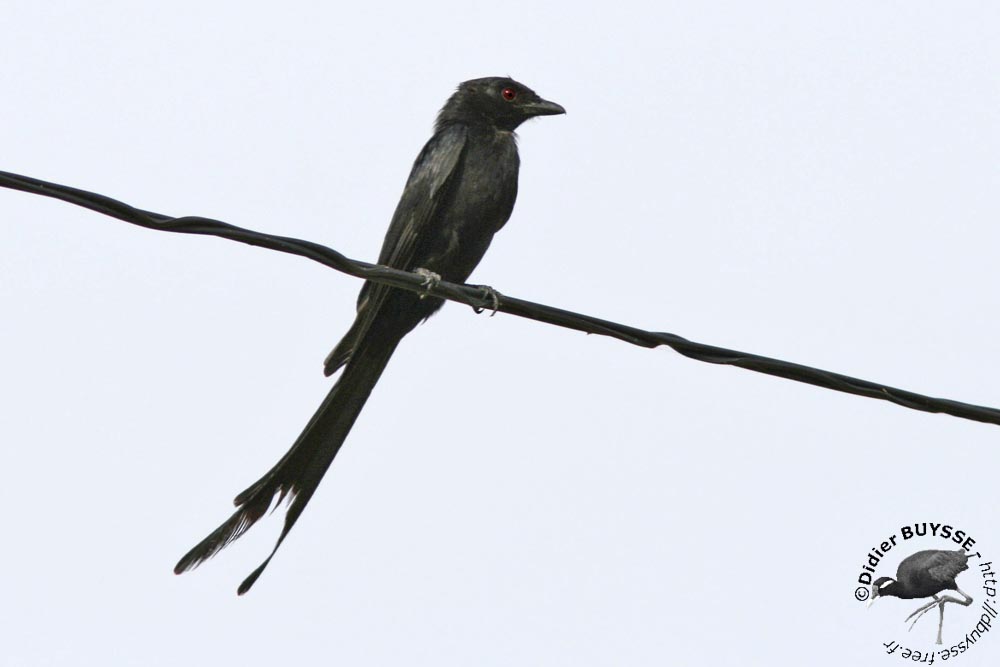
Black Drongo
Dicrurus macrocercus
Passeriforme Order – Dicruridae Family
BIOMETRICS:
Length: 26-32 cm; Weight: 40-60 g
DESCRIPTION:
Black Drongo is an all-black bird.

Adult has glossy blue-black or green-black plumage, with semi-translucent primaries visible in flight. Tail is long and deeply forked, and curves out at the end of outer tail feathers.
Head is black, with only very small white patch at bill’s commissures. Bill is black. Eyes are reddish. Legs and feet are dark grey.
Both sexes are similar.
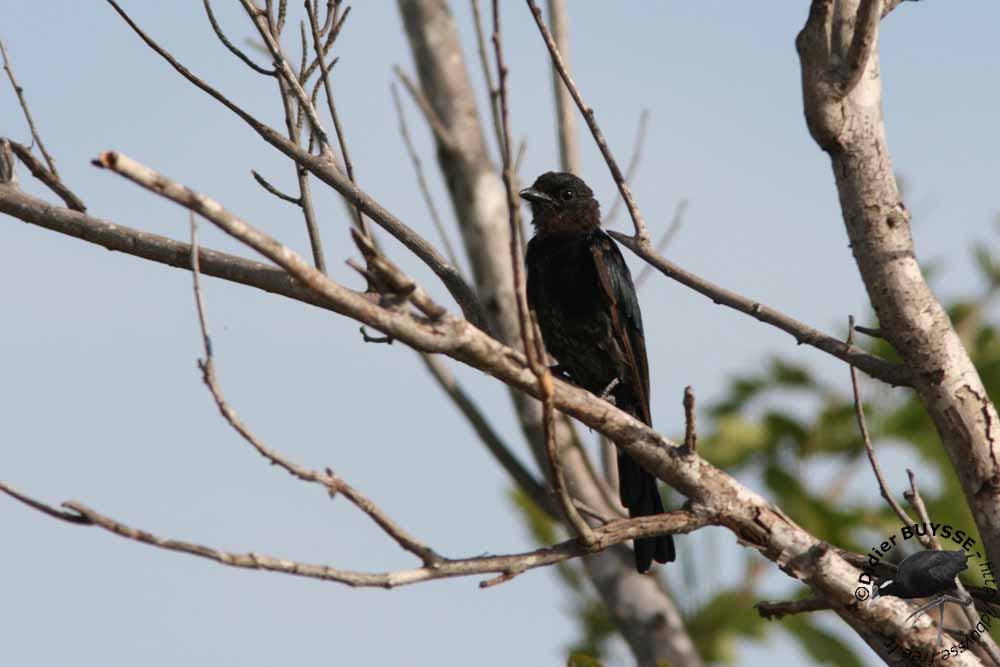
Juvenile is browner, with white tips to flanks and belly feathers, and brown eyes. It has shorter tail than adults.
VOICE: SOUNDS BY XENO-CANTO
Black Drongo has powerful and varied calls. They include scrapings and raucous calls, also metallic sounds. Call is a harsh, throaty “schweep-schweep”. But we can also hear beautiful and clear whistles.
HABITAT:
Black Drongo is common in open areas, savannahs and countries. It lives in open forests, habitation, farmlands and slightly wooded habitats, near water. It may be found from sea level to 2000 metres of elevation.
RANGE:
Black Drongo is resident in southern Asia, from SW Iran, through India and Sri Lanka, east to southern China and Indonesia.
BEHAVIOUR:
Black Drongo feeds on insects which it catches performing aerial sallies to pursue prey with bee-eater-like glides, and heavy flycatching actions. It hunts from a perch where it sits very upright because it has short legs.
It may catch insects on the ground, and can also capture some reptiles or nestlings. Then, it returns to the perch, in order to tear the prey before to swallow it. It also perches on the back of cattle for insects disturbed by animals.
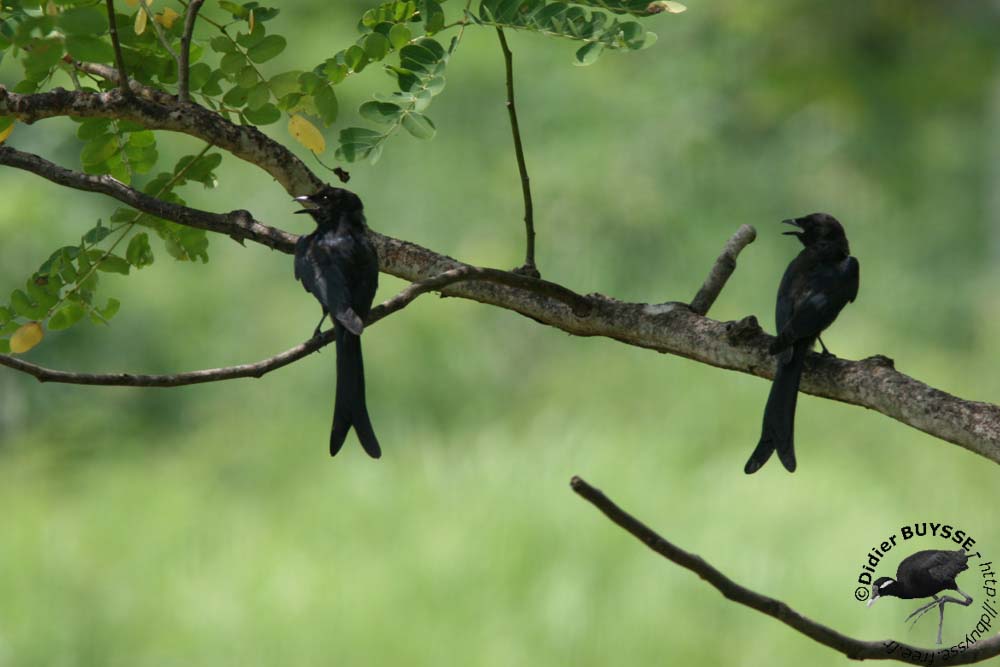
During breeding season, some displays may be observed. Pairs, or competitive trio, are perched close to each other, or face to face. They perform duets, singing with harsh scolding notes, while they strongly bow their heads up and down. They also perform fluttering aerial chases.
Most of tropical populations are resident and may be nomadic outside breeding season. However, populations living in northern areas are strongly migratory.
Black Drongo is a gregarious bird, roosting in flocks outside breeding period. Then, they disperse at dawn to their feeding areas.
Black Drongo is very territorial, defending vigorously feeding and breeding territories. It is fearless in front of larger birds, and will attack much larger species if nest or young are threatened. It can chase large crows or kites.
This species may even chase other birds, in order to steal their preys.
FLIGHT:
Black Drongo performs agile, acrobatic evolutions and buoyant flights when it pursues a flying prey. Usually, it has an undulating flight.
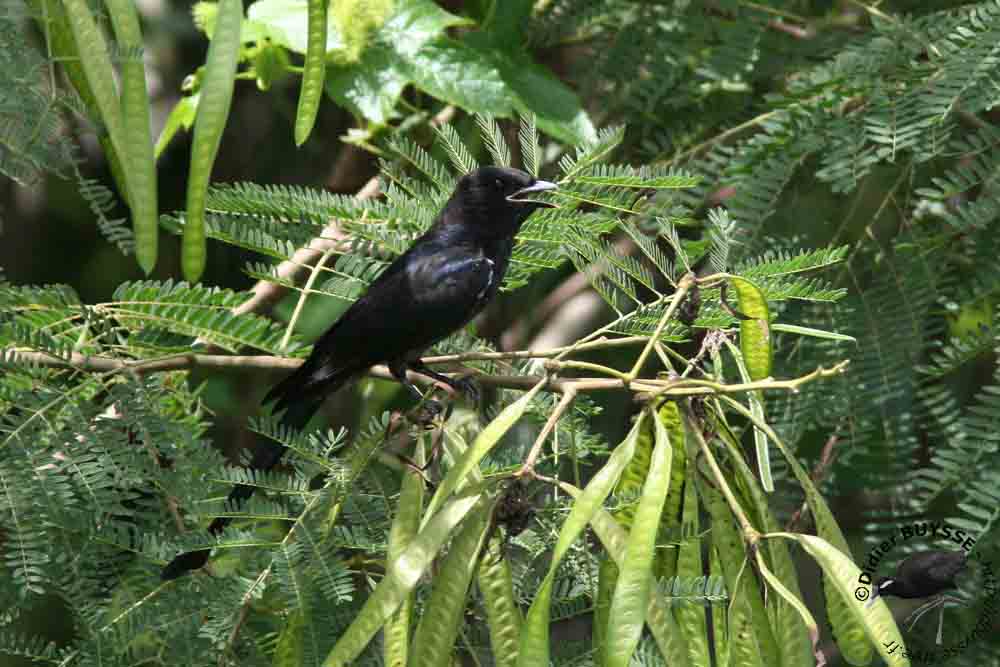
REPRODUCTION:
Black Drongo’s nest is located high in tree. It is a loose cup made with twigs, grass, leaves and fibres, woven with spider webs. Nest is usually built in a horizontal fork, at tip of a branch in an isolated tree. Nest may be at about 4 to 10 metres above the ground.
Black Drongo breeds from February to August, earlier or later according to the place.
Female lays 2 to 5 white, pinkish or creamy eggs, spotted with reddish- brown. Incubation lasts about two weeks. Both parents share domestic duties and protect the nest.
Black Drongo’s nest is often parasitized by cuckoos.
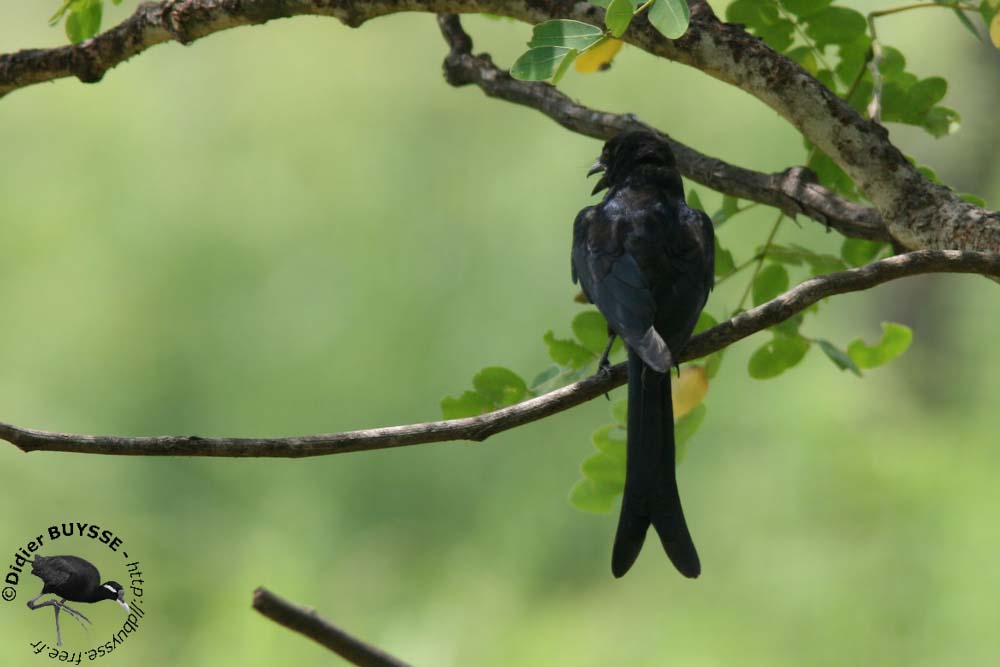
DIET:
Black Drongo feeds mainly on insects such as ants and termites, locusts and crickets, beetles, bees, moths and butterflies. It also consumes small reptiles, birds and bats. Black Drongo feeds on flower nectar too, playing an important role in plant pollination.
PROTECTION / THREATS / STATUS:
Black Drongo populations are not threatened. This species is beneficial to agriculture, because it destroys large variety of insects which are pests for cultivated areas.
Fr: Drongo royal
All : Königsdrongo
Esp : Drongo Real
Ital : Drongo nero
Nd : Zwarte Drongo
Russe : Черный дронго
Sd : Svart drongo
Photographs by Didier Buysse
His website: Vision d’Oiseaux
Text by Nicole Bouglouan
Sources :
LES OISEAUX DE THAILANDE par Roland Eve et Anne-Marie Guigue - Times Editions - ISBN: 9812042008
L’ENCYCLOPEDIE MONDIALE DES OISEAUX - Dr Christopher M. Perrins - BORDAS - ISBN: 2040185607
Wikipedia (Wikipedia, The Free Encyclopedia)